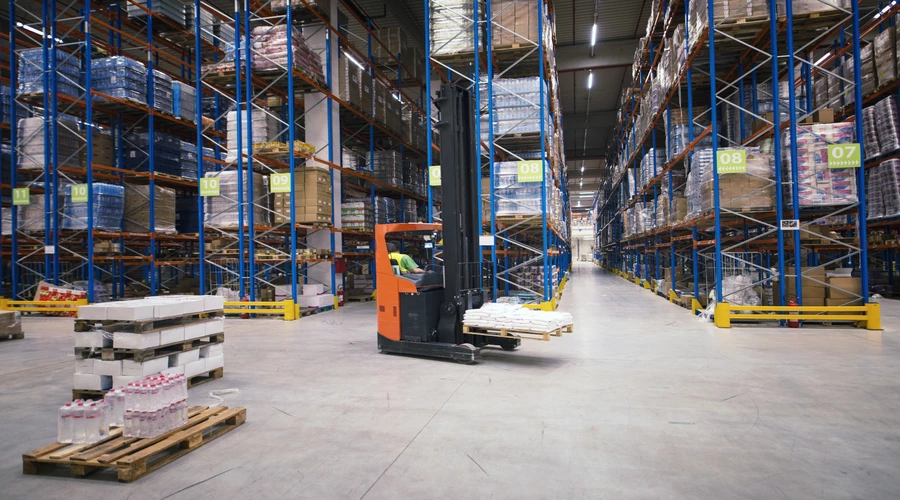
Industrial racking systems are metal structures designed to support the products in a warehouse or industrial facility. Numerous types of industrial racking are a key element in the smooth functioning of a warehouse and play an important role in the logistics and supply chain operations of organizations.
The drive-in rack system offers maximum-density storage of similar products and pallets in your warehouse. Drive-in rack systems eliminate aisles in a warehouse facility because the drive-in system is made for storing high quantities of similar products which use the same entry and exit point for each bay or rack.
Most cost-effective high-density system available
Can be constructed from roll-formed or structural rack material
Reduces square footage imprint up to 35% compared to selective pallet racks
Not suitable for a facility with a lot of different products
Challenging to rotate time-sensitive products.
Not flexible in design
It is designed to allow for heavy storage of product that doesn’t require First-in First-Out retrieval. Push back pallet racks are stationary rack structures that load pallets from the front onto an installed cart system that slides on inclined rails
Easy product accessibility
High-density storage and more flexibility
Can be custom-designed
Low maintenance pallet storage system
Rack damage is minimized
More expensive than drive-in pallet rack system
Higher maintenance cost
These racks are a vital storage system that uses gravity rollers to automate pallet storage and retrieval and increase storage efficiency. Using a pallet flow storage system can double or even triple the storage capacity in your facility in contrast to other methods.
Once loaded, product rotation is automatic
Dedicated lane to one product
Great for a large number of pallets
Quick and efficient inventory turnover
High capital investment
Requires good pallet quality
High maintenance requirements
Requires aisles that can eat up warehouse space
They are the same as pallet flow racks, but designed for boxes and small products, or split case picking. Mostly found in warehouses with high volume order picking, these systems can be loaded from the back and the product cartons slide off gravity-fed rollers or wheels to the front of the racking system for collecting and packing orders.
Can be either front or back-loaded
Uses gravity as a free power source
Increased efficiency for order fulfillment centers
Save space and increase efficiency
Carton flow rack systems are more costly than traditional warehouse shelving
Cantilever Racking Systems are the best solution for storing longer, bulky items without an aisle upright column to limit horizontal storage space. Their design permits them to be built out of towers, arms, and bases.
Capacity ranges anywhere from light-duty to heavy-duty
Helps reduce handling time and cost
Strong and safe storage option
Fast and easy installation
Higher capital investment
May require additional flooring or foundation reinforcement prior to installation
Inefficient at storing pallets
From simple selective racks to more innovative and complex storage technologies and solutions, 13SQFT can work with you to design and install a pallet rack system for any facility or budget.
POSTED BY
Ishika Adhana
Digital Marketing Executive